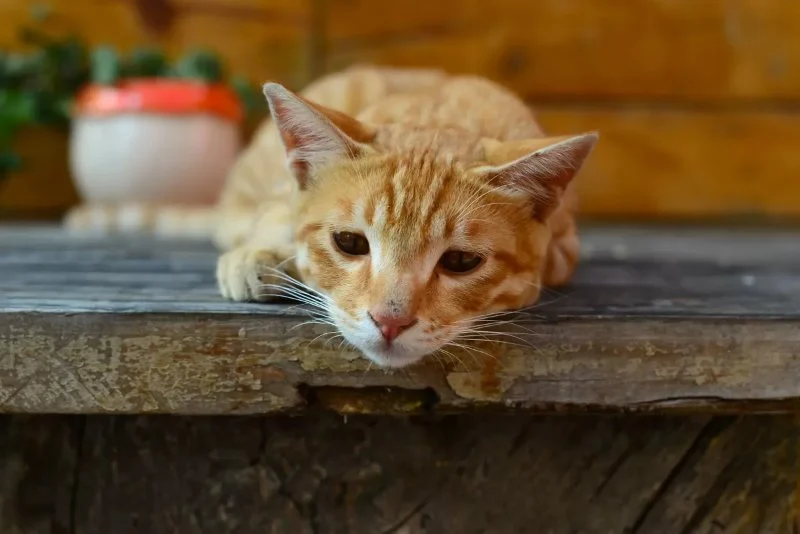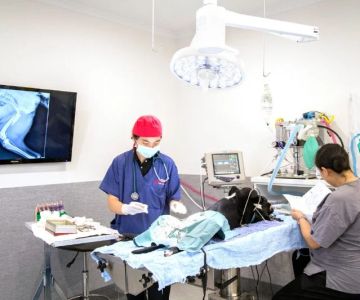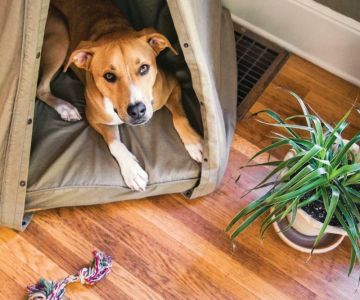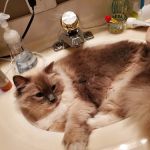
- 1. What is Panleukopenia (Distemper) in Cats?
- 2. Signs of Panleukopenia in Cats
- 3. How Panleukopenia Spreads in Cats
- 4. Prevention of Panleukopenia in Cats
- 5. Treatment Options for Panleukopenia
- 6. Real-Life Case Study: Dealing with Panleukopenia in Cats
1. What is Panleukopenia (Distemper) in Cats?
Panleukopenia, also known as feline distemper, is a highly contagious viral infection that primarily affects cats. It is caused by the feline parvovirus, which targets the cat's gastrointestinal system, immune system, and bone marrow. This disease is often fatal, especially in young kittens, unvaccinated cats, or those with weakened immune systems.
Despite its severe nature, Panleukopenia is preventable through proper vaccination. Understanding the symptoms and early warning signs can make all the difference in preventing the disease or getting prompt treatment.

Greens Fork Animal Hospital
Greens ForkWayne CountyIndiana
8089 State Rte 38, Greens Fork, IN 47345, USA
2. Signs of Panleukopenia in Cats
The symptoms of Panleukopenia can appear suddenly and worsen rapidly. Common signs to watch for in cats include:
1. Vomiting and Diarrhea
Vomiting and severe, often bloody diarrhea are the hallmark symptoms of Panleukopenia. These symptoms can cause dehydration, which can lead to further complications if left untreated.
2. Lethargy and Weakness
Cats suffering from Panleukopenia typically appear lethargic and weak. They may not have the energy to interact with their environment, eat, or drink.
3. Fever
A fever is a common response to the infection. Cats with Panleukopenia may experience fluctuating body temperatures, making them appear lethargic and unresponsive to stimuli.
4. Loss of Appetite
Panleukopenia can lead to a significant loss of appetite, which may result in rapid weight loss. Cats may refuse to eat or drink, exacerbating dehydration and weakness.
3. How Panleukopenia Spreads in Cats
Panleukopenia is highly contagious and can spread rapidly among cats, particularly in environments such as shelters, catteries, and multi-cat households. The virus is transmitted through direct contact with an infected cat’s bodily fluids, such as saliva, urine, and feces. It can also spread indirectly via contaminated surfaces, bedding, or food and water bowls.
Because the virus can survive for extended periods outside a cat's body, it can be challenging to eradicate once introduced to an environment. This makes preventive measures, such as vaccination, essential for cat owners.
4. Prevention of Panleukopenia in Cats
The most effective way to prevent Panleukopenia in cats is through vaccination. The feline distemper vaccine, also known as the FVRCP vaccine, provides immunity against Panleukopenia and several other common feline diseases.
1. FVRCP Vaccine
The FVRCP vaccine is a combination vaccine that protects cats from feline viral rhinotracheitis (FVR), calicivirus, and Panleukopenia. Kittens typically receive their first vaccine dose at 8-9 weeks of age, followed by boosters every 3-4 weeks until they reach about 16 weeks old. After the initial series, adult cats need a booster vaccine every 1-3 years, depending on the vet's recommendation and local regulations.
2. Keeping Cats Indoors
Limiting your cat’s exposure to outdoor environments can reduce the risk of infection. Outdoor cats are more likely to come into contact with infected animals or contaminated surfaces. Keeping your cat indoors significantly lowers their exposure to harmful pathogens like the Panleukopenia virus.
3. Sanitation and Disinfection
For households with multiple cats or cats that spend time outdoors, regular sanitation and disinfecting of living areas are crucial. This includes cleaning bedding, litter boxes, and food/water dishes regularly to prevent the spread of the virus. Use a disinfectant that is effective against parvovirus, as this virus can survive on surfaces for months.
5. Treatment Options for Panleukopenia
While there is no specific cure for Panleukopenia, prompt supportive care can significantly improve a cat's chances of recovery. Treatment usually focuses on managing symptoms and preventing complications.
1. Fluid Therapy
Dehydration due to vomiting and diarrhea is a serious concern for cats with Panleukopenia. Fluid therapy, either subcutaneously or intravenously, is often required to rehydrate the cat and stabilize their condition.
2. Antibiotics
Secondary bacterial infections are common in cats with Panleukopenia due to the suppression of their immune system. Antibiotics may be administered to prevent or treat these infections.
3. Anti-Viral Medications
In some cases, anti-viral medications may be given to help reduce the severity of symptoms and improve the cat’s chances of recovery. However, this treatment is most effective when started early in the infection.
6. Real-Life Case Study: Dealing with Panleukopenia in Cats
Let’s take the case of a 6-month-old kitten named Max, who was brought to the vet after showing signs of lethargy, vomiting, and diarrhea. Max was diagnosed with Panleukopenia, and his condition worsened rapidly, causing significant concern for his owner.
With immediate hospitalization and aggressive treatment, including intravenous fluids and antibiotics, Max’s condition stabilized. However, his owner was advised to keep him indoors and ensure he received his full vaccination series after recovery to prevent future infections.
This case emphasizes the importance of early detection, supportive care, and the critical role of vaccinations in preventing such life-threatening diseases.
To ensure your cat is protected from Panleukopenia, visit Pet & Puppy for top-rated vaccinations, health products, and advice from pet care experts.








 1214 Central Store0.0 (0 reviews)
1214 Central Store0.0 (0 reviews) Burlington Pet Hospital4.0 (118 reviews)
Burlington Pet Hospital4.0 (118 reviews) ArkVets4.0 (426 reviews)
ArkVets4.0 (426 reviews) Hartzell Veterinary Service: Charles W. Hartzell, DVM and Sue Ann Hartzell, DVM4.0 (105 reviews)
Hartzell Veterinary Service: Charles W. Hartzell, DVM and Sue Ann Hartzell, DVM4.0 (105 reviews) Noah's Ark Animal Hospital4.0 (163 reviews)
Noah's Ark Animal Hospital4.0 (163 reviews) Jasper Pet Clinic4.0 (285 reviews)
Jasper Pet Clinic4.0 (285 reviews) Transitioning Training Methods as Pet Ages: Adapting Techniques for Senior Pets
Transitioning Training Methods as Pet Ages: Adapting Techniques for Senior Pets How to Read & Understand Pet Nutrition Labels for Your Pet's Health
How to Read & Understand Pet Nutrition Labels for Your Pet's Health How to Choose the Right Pet Supplement Brand: Essential Tips for Pet Owners
How to Choose the Right Pet Supplement Brand: Essential Tips for Pet Owners How Much Should You Feed Your Pet? Portion Guide by Age & Breed
How Much Should You Feed Your Pet? Portion Guide by Age & Breed How to Create a Pet Health Journal: Metrics to Track for Better Pet Care
How to Create a Pet Health Journal: Metrics to Track for Better Pet Care What Breed-Specific Health Issues You Should Be Aware Of
What Breed-Specific Health Issues You Should Be Aware Of